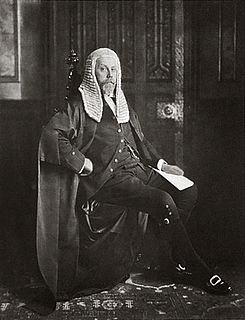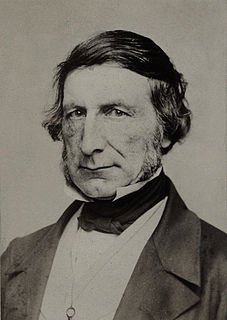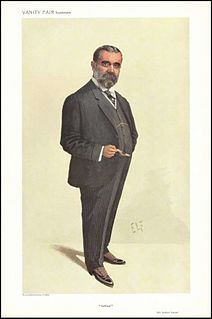
Earl of Stradbroke, in the County of Suffolk, is a title in the Peerage of the United Kingdom. It was created in 1821 for John Rous, 1st Baron Rous, who had earlier represented Suffolk in the House of Commons.

Viscount Ullswater, of Campsea Ashe in the County of Suffolk, is a title in the Peerage of the United Kingdom. It was created in 1921 for James Lowther upon his retirement as Speaker of the House of Commons. He was the eldest son of the Hon. William Lowther, third son of the Hon. Henry Lowther, second son of William Lowther, 1st Earl of Lonsdale. The first Viscount lived to the age of 93, and was pre-deceased by both his eldest son the Hon. Christopher Lowther, a Conservative politician, and his eldest son's eldest son John Arthur Lowther (1910–1942), the title being inherited by his seven-year-old great-grandson, the second and current Viscount, in an extremely rare instance of a great-grandson succeeding his great-grandfather in a peerage. The second Viscount held office in the Conservative administrations of Margaret Thatcher and John Major and since 2003 he has been one of the ninety elected hereditary peers that remain in the House of Lords after the passing of the House of Lords Act 1999. As a descendant of the first Earl of Lonsdale he is also in remainder to this peerage and its subsidiary titles. The current holder of the earldom, Hugh Lowther, 8th Earl of Lonsdale, is Lord Ullswater's fourth cousin.

Baron Merthyr, of Senghenydd in the County of Glamorgan, is a title in the Peerage of the United Kingdom. It was created in 1911 for the Welsh coal mining magnate Sir William Lewis, 1st Baronet. He had already been created a baronet, of Nantgwyne in the County of Glamorgan, in 1896. The barony is named after the town of Merthyr Tydfil, where Lewis was born. Lord Merthyr's grandson, the third Baron, was Chairman of Committees in the House of Lords from 1957 to 1965 and a Deputy Speaker from 1957 to 1974. The latter was succeeded by his son, the fourth Baron. He disclaimed the peerage for life on 26 April 1977, three weeks after succeeding his father. He did not use his title of baronet either. He died on 5 August 2015.

St Edmundsbury was a local government district and borough in Suffolk, England. It was named after its main town, Bury St Edmunds. The second town in the district is Haverhill. The population of the district was 111,008 at the 2011 Census.

There have been seven Baronetcies created for persons with the surname Lewis, two in the Baronetage of England and five in the Baronetage of the United Kingdom. Only one creation is extant as of 2010.
The Seely Baronetcy, of Sherwood Lodge in Arnold in the County of Nottingham and Brook House in Brooke on the Isle of Wight, is a title in the Baronetage of the United Kingdom. It was created on 19 February 1896 for the industrialist Charles Seely (1833–1915), son and namesake of Charles Seely (1803–1887). The first baronet's grandson, the third Baronet, was created Baron Sherwood, of Calverton in the County of Nottingham, in the Peerage of the United Kingdom in 1941. The peerage became extinct on his death, but he was succeeded in the baronetcy by his younger brother, the fourth Baronet. As of 2017 the title is held by the latter's son, the fifth Baronet.
There have been two baronetcies created for persons with the surname Ewart, both in the Baronetage of the United Kingdom. One creation is extant as of 2010.
There have been five baronetcies created for persons with the surname Evans, one in the Baronetage of Ireland and four in the Baronetage of the United Kingdom. All of the baronetcies are now extinct.

There have been two baronetcies created for persons with the surname Lucas: one in the Baronetage of England and one in the Baronetage of the United Kingdom.
There have been three baronetcies created for members of the Rowley family, one in the Baronetage of Great Britain and two in the Baronetage of the United Kingdom. Two of the creations are extant as of 2007.
This is a list of Sheriffs and High Sheriffs of Suffolk.

Fornham All Saints is a small settlement and civil parish in Suffolk, England in the St Edmundsbury district. It is north-northwest of the town of Bury St Edmunds and 500m west of Fornham St Genevieve.

Fornham St Martin is a village and civil parish in the St Edmundsbury district of Suffolk in eastern England. Located on the northern outskirts of Bury St Edmunds off east and west from the A134, in 2005 its population was 1300. Its parish council is shared with neighbouring Fornham St Genevieve, and is known as Fornham St Martin cum St Genevieve Parish Council.
The Kent Baronetcy, of Fornham in the County of Suffolk, was a title in the Baronetage of Great Britain. It was created on 16 August 1782 for Charles Kent, later Member of Parliament for Thetford. The title became extinct on the death of the third Baronet in 1848.

The Broke, later Broke–Middleton Baronetcy, of Broke Hall in the County of Suffolk, was a title in the Baronetage of the United Kingdom. It was created on 2 November 1813 for Philip Broke, a Rear-Admiral of the Royal Navy. He was the grandson of Robert Broke, nephew of Sir Robert Broke, 1st Baronet, of Nacton, who were both descended from Sir Richard Broke, Chief Baron of the Exchequer during the reign of Henry VIII. The second Baronet was Sheriff of Suffolk in 1844 and his younger brother the third Baronet was Sheriff of Suffolk in 1864. The third Baronet assumed the additional surname of Middleton in 1860 after inheriting the estate of his cousin Sir William Fowle Fowle-Middleton. The title became extinct on his death in 1887.
The Domville Baronetcy, of St Alban's in the County of Hertford, was a title in the Baronetage of the United Kingdom. It was created on 28 July 1814 for William Domville, Lord Mayor of London from 1813 to 1814. He was a descendant of William Domville, elder brother of Gilbert Domvile, ancestor of the Domvile baronets of Tempoleogue. The title became extinct on the death of the seventh Baronet in 1981.
Vice-Admiral James William Rivett-Carnac CB CBE DSC DL was a Royal Navy officer who became Commander-in-Chief of the New Zealand Division.

Fornham Hall was a large 18th-century country house near Bury St Edmunds. It was demolished in 1957.

Sir Charles Kent was a British landowner and MP.












